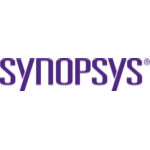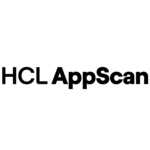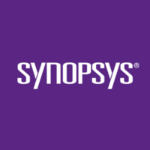TechnologyCounter provides genuine, unbiased real user reviews to help buyers make informed decisions. We may earn a referral fee when you purchase through our links, at no extra cost to you.
List of 15 Best Static Application Security Testing Software
Showing 1 - 15 of 26 productsCoverity Static is a software that helps developers identify and fix critical defects in their code. With its advanced analysis capabilities, Coverity Static empowers teams to produce high-quality, secure, code. Say goodbye to costly errors and delay...Read Coverity Static Reviews
With CAST AIP, businesses can take their software development to the next level. This innovative tool offers unparalleled visibility into code quality and structural integrity, helping organizations deliver high-performing, secure and maintainable ap...Read CAST AIP Reviews
beSOURCE is a versatile and innovative software designed to meet all your business needs. With its advanced technology and user-friendly interface, it streamlines processes and boosts productivity. Let beSOURCE be your go-to solution for all your bus...Read beSOURCE Reviews
Veracode is a leading software security company that provides reliable and innovative solutions to protect your applications and data from cyber threats. With its advanced technology and expertise, Veracode empowers businesses to confidently safeguar...Read Veracode Reviews
Appknox is a top-notch mobile security product designed to protect your apps from potential threats. We understand the importance of creating a secure digital environment, which is why our team has developed a unique solution that goes beyond traditi...Read Appknox Reviews
Kiuwan Code Security is a solution for identifying and preventing security vulnerabilities in your code. With advanced technology and customizable features, Kiuwan helps protect your applications from potential threats. Enhance your code quality and...Read Kiuwan Code Security Reviews
GitHub is a platform designed for developers, offering a streamlined way to collaborate on projects and manage version control. With its intuitive interface and robust features, GitHub has become the go-to choice for teams and individuals looking to...Read GitHub Reviews
HCL AppScan is a software that helps businesses identify and fix vulnerabilities in their web and mobile applications. With its advanced scanning and testing capabilities, it allows organizations to secure their digital assets and protect against cyb...Read HCL AppScan Reviews
Dynatrace is trusted by some of the worlds leading brands as a top-tier software intelligence platform. With its advanced features and innovative technology, Dynatrace provides real-time monitoring, deep insights, and automatic problem resolution for...Read Dynatrace Reviews
PT Application Inspector - your ultimate tool for analyzing, auditing, and optimizing applications. Designed with precision and accuracy, this innovative software takes a deep dive into your application code, providing valuable insights and identifyi...Read PT Application Inspector Reviews
Whitehat Sentinel Source is a software that protects your organization from harmful cyber threats. With advanced detection capabilities and innovative solutions, it keeps your sensitive data and systems secure. Get complete peace of mind with Whiteha...Read Whitehat Sentinel Source Reviews
DeepSource is a code review and quality analysis software designed to streamline the development process. With its intuitive interface features, DeepSource helps developers catch errors, improve code quality, and enhance productivity. Say goodbye to...Read DeepSource Reviews
Synopsys is a leading software company that specializes in electronic design automation and semiconductor intellectual property. With a global presence and a strong track record of innovations in the industry, Synopsys is a trusted provider of advanc...Read Synopsys Reviews
Snyk is a solution to keep your code safe and secure. Say goodbye to vulnerabilities and embrace a more reliable is a development process with Snyk. Our innovative software offers comprehensive protection for all of your code, ensuring peace of mind...Read Snyk Reviews
PVS-Studio is a code analysis tool that helps developers ensure the quality and reliability of their software projects. With its advanced suite of features, PVS-Studio streamlines the process of detecting bugs and potential vulnerabilities, providing...Read PVS-Studio Reviews
- What Is Static Application Security Testing Tools?
- Top Reasons Why Businesses Need Static Application Security Testing Tools?
- What Are the Top Key Features of Static Application Security Testing Tools?
- What Are the Top Benefits of Static Application Security Testing Tools?
- What Are the Steps to Choose the Right Static Application Security Testing Tools?
- What Are the Types of Static Application Security Testing Tools for Different Industries?
- What Are the Technology Trends for Best Static Application Security Testing Tools?
- What Are the Deployment Options for Static Application Security Testing Tools?
What Is Static Application Security Testing Tools?
Static application security testing (SAST) is a sort of software testing that looks for security vulnerabilities in a software application's source code. It analyses the application's code while it is not operating, which is known as "static" testing.
SAST tools analyze thousands of lines of code at a time to find security problems such buffer overflows, cross-site scripting, SQL injection, and basic coding errors. A SAST tool can swiftly discover security flaws before they are exposed to attackers, preventing possible harm and costly security issues.
The program compares the source code to a set of predefined security rules to identify any security flaws or vulnerabilities that may exist. After identifying security flaws, the tool generates detailed reports with pinpoint precision on where the flaw exists and how to resolve it. To effectively employ a SAST tool, organizations must first understand the application's codebase as well as the potential security concerns.
Many manufacturers offer static application security testing tools for many programming languages and technology stacks, including Java, Python,.NET, JavaScript, and C/C++. These tools are intended to help developers by highlighting vulnerable portions of code, allowing them to improve the security of their apps and lessen the danger of a security breach.
Top Reasons Why Businesses Need Static Application Security Testing Tools?
1. Find and Identify Security Vulnerabilities - The best SAST tools can identify whether components of a program contain security issues, allowing firms to patch them before hostile actors exploit these vulnerabilities.
2. Automate Vulnerability Scanning - Using automated solutions can greatly accelerate scanning operations, allowing firms to provide more accurate and up-to-date security status reports.
3. Identify Code Vulnerabilities - SAST software techniques can be used to determine which portions of a codebase are vulnerable to attack and, as a result, require the greatest attention.
4. Adheres to System Requirements - A static application security testing software can validate that the application code complies with government rules and industry standards.
5. Help Avoid Costly Data Breaches - Businesses can avoid costly data breaches in the future by detecting vulnerabilities while applications are being developed.
6. Reactively Monitor Applications - SAST testing tools can proactively monitor apps for modifications and notify firms if a security problem is discovered.
7. Indicates Security Issues Ahead of Releases - Businesses receive insights into security risks ahead of releases since SAST scanning tools give analysis throughout application development.
8. Detects Security Weaknesses Earlier - There's no need to be concerned about vulnerabilities leaking into the final product because static security analysis tools can spot security flaws far sooner.
9. Reduce False Security Findings – Businesses can reduce misleading security results by performing static application security testing software at the source code level.
10. Streamlines Security Processes - Businesses save time and costs on manual security processes by automating scanning and vulnerability discovery.
11. Prolong Applications’ Lifespans - Businesses can extend the life of their product by using SAST to identify outdated or insecure components of an application.
12. Facilitate Code Refactoring - Businesses can use SAST security tools to rework code and enhance security levels after discovering flaws in the codebase.
13. Increases Software Reliability - Businesses can improve software reliability and lower the likelihood of system crashes by reducing the number of faults in their code.
14. Enhances Open Source Security - Top SAST tools can help firms evaluate and improve open source security measures to ensure a smooth development process.
15. Enhances User Experience - Businesses may increase customer trust by keeping applications safe, resulting in a better user experience.
What Are the Top Key Features of Static Application Security Testing Tools?
1. Vulnerability scanning: Scans apps for known security flaws and generates a thorough report on the results.
2. Application Hardening: Enforcing secure coding rules and standards to prevent application security vulnerabilities.
3. Code analysis: Code evaluation that is automated to discover potential danger areas.
4. Threat modeling: Identifying and evaluating potential risks connected with proposed designs.
5. Security configuration assessments: Ensures that all apps are deployed with secure configurations per security best practices.
6. Penetration testing: Identifies application vulnerabilities by attempting to exploit them using various security testing approaches.
7. Authentication assessment: Passwords, multi-factor authentication, CAPTCHA, and other authentication systems are evaluated.
8. Security policy compliance: Identifying security policies and procedures that are out of date or are not being followed correctly.
9. Network vulnerability scanning: External danger vectors and probable attack pathways are detected.
10. Data leakage prevention: Monitoring private data across applications, networks, and devices to avoid unauthorized leaking.
What Are the Top Benefits of Static Application Security Testing Tools?
1. Detects security risks early in the software development life cycle (SDLC) and helps to reduce the likelihood of a production system assault.
2. Detection of known and new vulnerabilities as well as secure coding issues in code and executables.
3. Reduces the risk of malicious code exploitation in apps by preventing malicious code injection.
4. Keeps an eye on production systems for potential security breaches.
5. Generates reports automatically that outline any security concerns discovered and offer remedial solutions.
6. Checks all code and executable versions for compliance with the most recent security standards.
7. Easily integrates with current or proposed development practices and procedures.
8. Increases the effectiveness of manual security testing.
9. Aids in the faster introduction of new applications.
10. Allows organizations to discover and resolve security concerns before deployment.
What Are the Steps to Choose the Right Static Application Security Testing Tools?
Step 1: Determine your application's security requirements. Understanding the type of data your application will handle, determining the type of threat it may face, and evaluating the application architecture are all part of this.
Step 2: Investigate the market for SAST tools technologies. Learn about the types of security testing that each tool can give and read any reviews or testimonials that may exist.
Step 3: Create a list of criteria that your static application security testing tools should meet. This could include scalability and support, as well as data encryption and source code auditing.
Step 4: Create a list of the best SAST tools that satisfy your criteria and compare them. This should entail considering both the pricing and the feature set to select the best tool for your application.
Step 5: Put the selected SAST software to the test. Once you've narrowed your options down to two viable tools, it's time to put them to the test to see which one will give the greatest service for your application.
Step 6: Make a choice. Compare the features, performance, and cost of each tool to ensure you've chosen the SAST testing tools solutions.
Step 7: Put the tool into action. Once the decision has been taken, the SAST scanning tools must be correctly developed to discover any security flaws.
What Are the Types of Static Application Security Testing Tools for Different Industries?
Static application security testing (SAST) tools check for a range of security issues in software applications. Depending on the type of application and industry involved, there are five major types of SAST tools used:
1. Source Code Analysis Tools: These programs look for vulnerabilities, coding flaws, and strange code in source code to detect security risks. They can discover application-specific flaws such as buffer overflows, input validation flaws, and other programming issues.
2. Binary Analysis Tools: These tools detect security issues by evaluating executable code generated during the application compilation process. Binary analysis tools discover vulnerabilities in source code and binary executables, such as backdoors, vulnerabilities in third-party libraries, and other system oddities.
3. Combinatorial Analysis Tools: Through testing, these tools use a series of input combinations to uncover security problems in the application. This form of testing looks for unexpected code paths to find faults or security flaws.
4. Mutation Testing Tools: These tools detect potential security problems by simulating how malicious inputs could enter an application. This type of testing searches for code flaws and is frequently used to discover buffer overflows or injection attacks.
5. Application Layer Testing Tools: These tools are intended to examine the attack surface of an application using a combination of manual and automated methodologies. This form of testing detects potential flaws in HTTP, web services, and other Internet-based applications.
What Are the Technology Trends for Best Static Application Security Testing Tools?
The finest static application security testing tools' technological trends often entail the use of automated methods and processes to test for vulnerabilities during the application development process. To establish how safe an application is, automated static analysis tools typically employ a variety of scanning approaches such as code audits, data flow analysis, control flow analysis, and penetration testing.
Furthermore, static analysis techniques that use artificial intelligence (AI) algorithms, application behavior analytics, and simulation can assist in detecting malicious code that has been intentionally planted or injected into the application code.
Finally, SAST tools introduce interactive dashboards and reporting capabilities to help users comprehend and analyze the findings of the study.
What Are the Deployment Options for Static Application Security Testing Tools?
Static Application Security Testing (SAST) technologies are commonly used in two ways. They can first be deployed as a standalone application, that is, as an on-premises installation hosted on the customer's servers. This method of deployment gives the organization complete control over the tool, but it incurs fees for implementation, installation, and maintenance.
The second alternative for deployment is to employ a cloud-based deployment. In this situation, the vendor hosts the best SAST tools, and access is supplied either as a subscription-based service or for a one-time cost. While a cloud-based deployment may be less expensive, it may necessitate a longer deployment window than an on-premises implementation.
In either scenario, the organization should make certain that the static application security testing software is compatible with its environment and configurations, as well as any other applications and SAST scanning tools that are in use. Because SAST technologies should be able to meet those standards, the organization should also consider any related compliance requirements.
Finally, once SAST software has been installed, the organization should be able to evaluate its performance.















